Clubfoot - Crooked foot or Pes equinovarus (Part One)
Parents know immediately if their newborn has a crooked foot. Some know even before the child is born, if an ultrasound is done during pregnancy after week 16. A crooked foot occurs in approximately one in every 1,000 births, slightly more common in boys than girls. One or both feet may be affected.
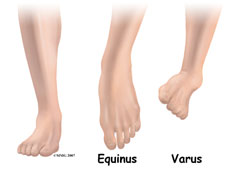 |
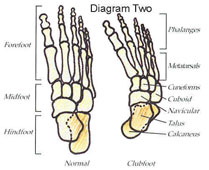 |
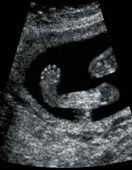 |
CAUSES
Doctors are still not sure why this happens, although it can occur in some families with previous pes equinovarus. In fact, the chance of your baby having a crooked foot is twice as likely if you, your spouse, or your other children also have it. Less severe foot problems in minors are common and are often mistakenly called crooked foot.
In fetal pes equinovarus, there are changes in the position and shape of the tarsal bones, ligaments, tendons, and muscles. The same changes have been observed in newborns with pes equinovarus. Typical PEV is characterized by the presence of all parts of the foot skeleton and is only changed in their shape and position, meaning the foot is deformed. This type of PEV is characterized by a relatively good prognosis because it responds well to treatment.
SYMPTOMS

The foot deformity is evident at birth, while there are different degrees of the deformity's intensity, from mild to very severe.
The appearance is unmistakable, leaving no room for error: the foot is turned sideways and it might even seem that the tip of the foot is where the heel should be.
The affected foot, sole, and foot are smaller and shorter than on the normal side.
This is not a painful condition. But if untreated, the crooked foot will lead to significant discomfort and disability in the teenage years and beyond
The deformity consists of several components:
Equinus, the deformation in which the foot is in the position of plantar flexion, so that during loading only the front part of the foot touches the ground.
Varus, the inversion of the foot, that is the lowering of the outer edge of the foot and the raising of the inner edge.
Adductus, the front part of the foot, i.e., the metatarsus with the toes, is directed towards the medial sagittal axis of the body so that with the back part it forms an angle opened medially (from the inside).
Excavatus the front part of the foot in relation to the back part is directed in the plantar direction, so we have an emphasis of the normal longitudinal arch of the foot.
Internal rotation of the distal part of the tibia, is a non-constant component of the deformity.
Walking is possible only by throwing one foot over the other, or in an arc making a semicircle. The walking is inelastic. The supportive surface of the foot is reduced, the center of the body's load is displaced forward, which is compensated by an emphasized lumbar lordosis. This later leads to degenerative arthritic changes of the hip joints and the lumbosacral column.
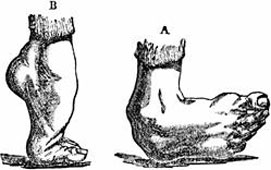 |
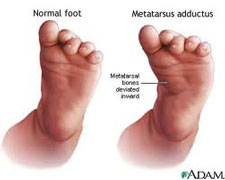 |
Is there a cure for my slightly curved legs, meaning below the knee my shin is not straight? In other words, can I make my shin straight, and if so, how?
Sent by Anisa, më 12 April 2018 në 12:14
For sure, there is treatment... you can come so we can consult closely
Replay from Dr. Ledian Fezollari, më 12 April 2018 në 13:17